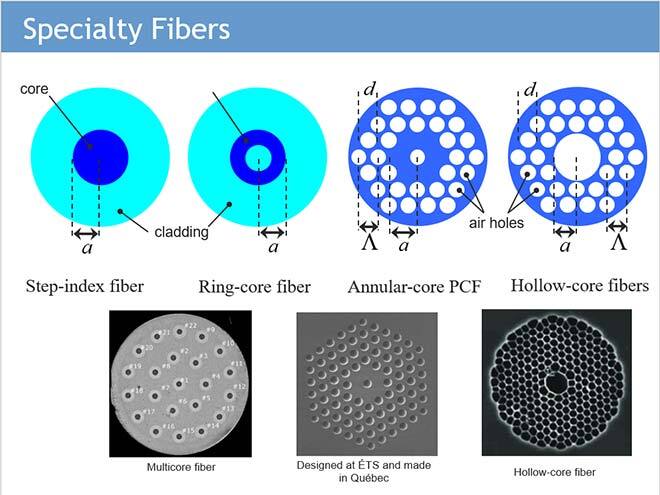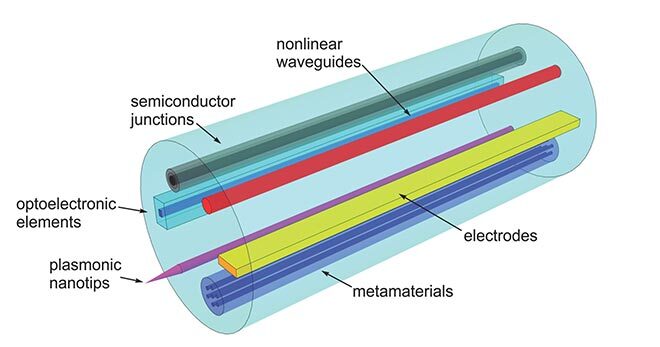Supporting Internet Growth through Quantum Networks

Purchased on Istockphoto.com. Copyright
All Internet data pass through optical communication networks. These networks are made up of single-mode optical fibres, installed some 30 years ago. Today, the advent of video streams and connected objects, combined with the popularity of cloud computing, are fuelling our appetite for ever-larger and faster bandwidths. As the physical limits of existing networks will soon be reached, new solutions must be found in order to ensure the Internet’s growth.
Special Optical Fibres
To replace yesterday’s single-mode optical fibres, researchers of the Marcelle-Gauvreau Research Chair in Multimaterial and Multifunctional Photonic Devices will pursue the development of several types of higher-performance optical fibres (see Figure 1).

Figure 1: Special optical fibres being studied by the Chair researchers
One of their projects is the design, manufacturing and characterization of hollow core optical fibres for future space division multiplexing (SDM) technologies. These fibres have the distinguishing feature of guiding light into an empty core filled with air or argon, greatly reducing loss and latency. Coupled with SDM—a method that sends different forms of light simultaneously into an optical fibre as separate channels—these fibres promise to revolutionize the field of optical communications. Having developed an expertise in this technology over the past five years, the Chair’s researchers intend to push back the boundaries of this field.
Transitioning to Quantum Communications

Bora Ung, professor in the Electrical Engineering Department at ÉTS and holder of the Marcelle-Gauvreau Research Chair in Multimaterial and Multifunctional Photonic Devices
Other optical fibres, hollow or solid core, will also be developed for quantum communications networks, i.e. networks that use some properties observed in quantum mechanics. Key in this new field of research is the level of security in communications provided by quantum channels.
Indeed, one fundamental principle of quantum mechanics is their superposed states. In conventional information sciences, information is encoded as 0 and 1, two mutually exclusive states; in quantum communications, these two states can exist simultaneously until the state is measured. Measuring a quantum state triggers it to “choose” on a final state: 0 or 1. One essential implication of this phenomenon is the non-cloning theorem, which states that a perfect copy of a quantum state is impossible to obtain without destroying the information it contains. This theorem is the foundation of a mechanism that ensures the security of quantum networks. Another principle, the quantum entanglement of particles, forms the basis of quantum teleportation, a phenomenon that leads to other approaches to cryptography.
Quantum channels are still mostly restricted to the research community, but once mastered, they could be beneficial in sensitive sectors, such as government or banking communications, or in providing encryption keys used to decode signals sent over less secure but faster networks.
The vortex beams already studied by ÉTS researchers constitute a basis under serious consideration for quantum communications applications.
Optical Sensors and Connected Devices
Finally, new approaches to functionalize special optical fibres made from nanomaterials will be explored in the design of new compact environmental sensors (humidity, gas, magnetic fields) as well as for biodiagnostic applications.

Figure 2: Example of fibre optic-based sensors


